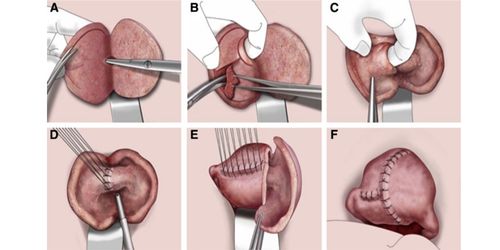Adenomyomectomy (Surgical Removal of Adenomyosis)
Adenomyomectomy is a specialized surgical procedure used to remove localized adenomyosis from the uterus. Adenomyosis is a condition in which the inner lining of the uterus (endometrium) grows into the muscle wall (myometrium), causing severe pain, heavy menstrual bleeding, and infertility in some cases. This procedure is designed to provide relief while preserving the uterus, making it suitable for women who wish to retain fertility.

What to Expect
Before the Procedure
- Comprehensive gynecological examination
- MRI or transvaginal ultrasound to assess adenomyosis
- Blood tests and anesthesia fitness check
- Preoperative counseling to discuss fertility preservation
During the Procedure
Adenomyomectomy is performed under general anesthesia. It can be done via laparotomy (open surgery) or laparoscopically (minimally invasive), depending on the severity and location of the adenomyotic tissue.
- A uterine incision is made to access the affected tissue
- Adenomyotic lesions are carefully excised
- The uterus is reconstructed to restore its structure
- The abdominal incision is closed with sutures
After the Procedure
- Hospital stay: 2–4 days (depending on surgical type)
- Mild to moderate pain managed with medication
- Recovery time: 4–6 weeks for open surgery, shorter for laparoscopy
- Post-surgery follow-up for wound check and menstrual monitoring
Benefits of Adenomyomectomy
- Significant reduction in menstrual pain and bleeding
- Preserves the uterus and potential fertility
- Improved quality of life and emotional well-being
- Better control over adenomyosis symptoms without hormone dependency
Ideal Candidates
- Women diagnosed with focal or localized adenomyosis
- Patients suffering from chronic pelvic pain and heavy periods
- Women who wish to preserve their uterus and fertility
- Those for whom medications or hormone therapy have failed
Pre- and Post-Procedure Care
Before: Discontinue blood thinners, arrange medical leave, and follow pre-op fasting instructions. Complete all diagnostic imaging as advised.
After: Rest, avoid heavy lifting, and take medications as prescribed. Track menstrual changes. Resume normal activity only after clearance from your doctor.
Testimonials
"I had unbearable periods for years. After adenomyomectomy, I finally feel like myself again. My periods are manageable, and I’m planning a pregnancy now." – Ritika S., 33
"Dr. Rainee’s care and surgical expertise gave me hope. I was nervous, but she explained everything with such empathy. Highly recommend her!" – Neha M., 36
Frequently Asked Questions
Is adenomyomectomy a cure for adenomyosis?
It offers long-term relief, especially in focal adenomyosis, though there is a small risk of recurrence over time.
Can I get pregnant after adenomyomectomy?
Yes, many women conceive successfully after the surgery, especially if the uterus is well-preserved during the operation.
How is this different from hysterectomy?
Adenomyomectomy removes only the diseased tissue, while hysterectomy removes the entire uterus. It’s ideal for fertility preservation.
Is the surgery painful?
The procedure is done under anesthesia. Some post-op discomfort is normal and well managed with medications.
What if I have diffuse adenomyosis?
In such cases, your doctor may suggest alternatives such as hormonal therapy or a hysterectomy, depending on symptoms and fertility goals.
Contact Dr. Rainee Agrawal
Don’t let chronic pelvic pain and heavy periods affect your life. Schedule a consultation with our experienced gynecology team for accurate diagnosis and tailored treatment.
Contact Us+91 6265 125 460
Contact Person: Dr. Rainee Agrawal

